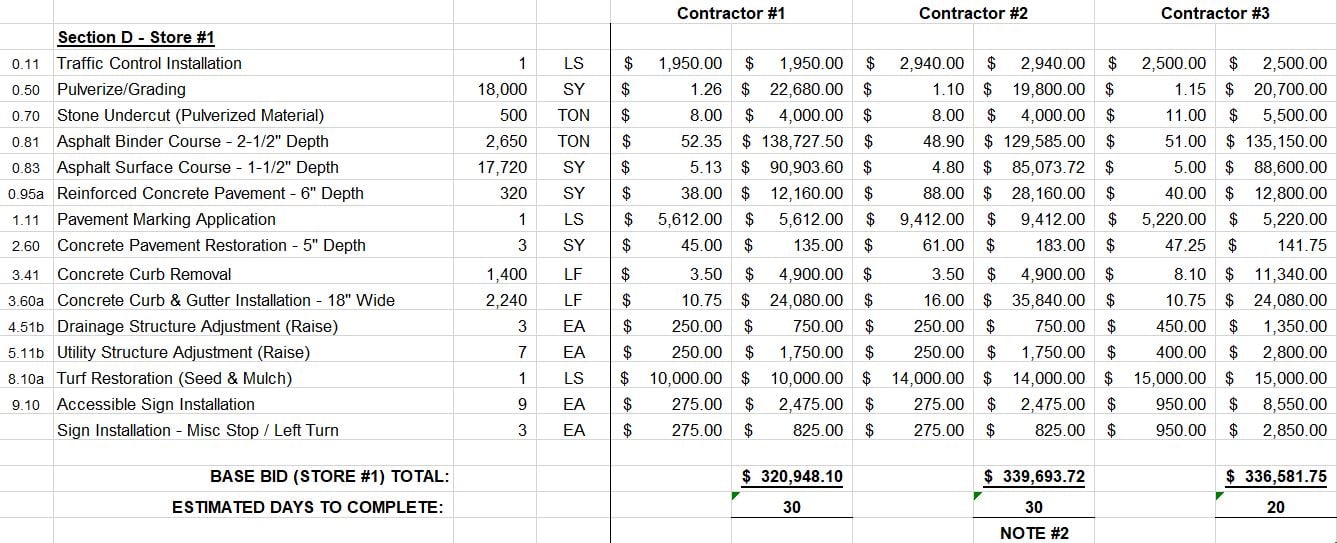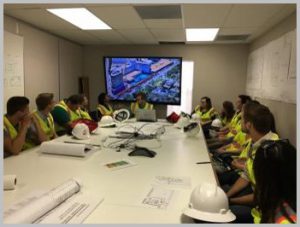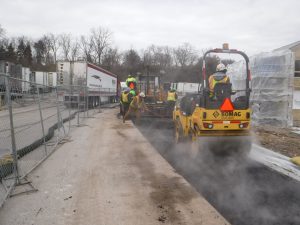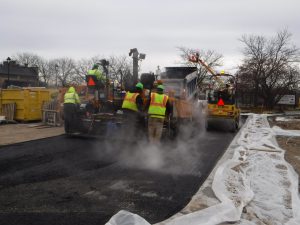 By Troy Kaiser
By Troy Kaiser
Senior Consultant
TKasier@benchmark-inc.com
Ideally, projects located in northern climates are strategically bid in order to secure competitive bidding. With contractors eager to fill schedules and avoid winter weather, owners can benefit from planning ahead. Bidding either late in the year or early in the new year as contractors work to build their backlog can lead to cost savings. Certainly, this is ideal.
As we all know, reality doesn’t always provide this ideal schedule. In these situations, how does one approach a late season pavement project? Despite the situation, emergency projects that need to be done to solve particular issues, or sometimes facility mangers receive unexpected funding as the fiscal year comes to a close, there are strategic steps you can take to get these jobs done faster and, most importantly, still result with superior quality. A Plan B is needed – one that can fast-track the project, without compromising quality.
Prepare Bid Documents
The first step is preparing a request for pricing and bidding documents. We recommend detailed documents that provide unit pricing for all line items outlined in the scope. This way, contractors can see exactly what they are bidding on, making it easier and quicker to prepare a bid. Contractors are busy constructing existing projects later in the year. If you make bidding your project as easy and straight forward as possible, they are more likely to take the time to complete and submit an accurate bid. This will also make it easier for you to review and compare bids; easily identifying any inaccuracies or anomalies that may exist.

UNIT PRICING
Contact Prospective Bidders
The next step is contacting prospective contractors to review current backlog, discuss interest in the upcoming project, and provide notification of the upcoming bidding documents. If possible, this would be a good time to explain the size and scope of the project and mention the time frame you are anticipating work to be completed. This will help get contractors thinking about the job and give you a good indication of their interest level. It will also give contractors as much time as possible to figure out how to fit the project into their schedule. (Some contractors may even save a slot in their schedule in case they are awarded the project.)
This would also be a good time to check with local municipalities to determine whether a permit will be required, including verifying an estimated timeframe to obtain the required paperwork. If a permit is required, you can either obtain the permit during the bidding process or discuss ways the contractor might be able to expedite the permitting process. Permit issues can negatively impact a project schedule if not investigated prior to construction.
Issue Bidding Documents
Once bidding documents are complete, get them to contractors as soon as possible. If required for the permit, also get a copy to the municipality for review. Usually the minimum amount of time given for contractors to submit bids is two weeks after bidding documents are distributed. In a fast-track situation, you can reduce bid turnaround time to one week if utilizing unit price bidding. Requesting completed bids at the end of the day on a Friday seems to work best as you can grant extensions (if needed) for contractors to make final considerations over the weekend.

PRECONSTRUCTION MEETING
Contact Winning Contractor
After evaluating bids and selecting a contractor, contact them as soon as possible to notify them that a contract or purchase order will be on the way. Discuss when they are available to start the project and anticipated duration. Work with the contractor to coordinate a pre-construction meeting and invite any facility managers whose operations will be affected by the project. Discuss with the contractor any permitting requirements and devise a plan to obtain.
Complete Required Paperwork
The next step is to make sure a contract or purchase order is issued to the contractor as soon as possible. Generally, contractors are only going to make 100 percent sure things happen for your project once they have a contract or purchase order in hand. This is a good time to send the contractor a list of materials that will be used on the project and request submittals. The sooner submittals are received, the sooner they can be reviewed for approval or resubmitted. As with contracts, short turnaround time for required paperwork is necessary to make sure the project gets completed before cold weather hits.

CONSTRUCTION
Conduct Pre-Construction Meeting
At the pre-construction meeting, review the construction plan and any phasing that may be involved. Make sure to communicate both the importance of not delaying the project and supplying the contractor with as much area as possible per phase to facilitate higher production rates. Sometimes it is easier to give up a larger area for one week than to split it into two areas and deal with traffic switches, etc.
If approaching weather is a concern, consider discussing possible back-up plans as construction gets underway. If weather is starting to turn and you have doubts about completing the project while temperatures are optimal for placing pavements (especially asphalt), approach the contractor about placing only lower lifts in the current year and request them to return in the spring to place the final surface layer. There will be additional costs such as mobilization, milling butt joints, sweeping the lower lift, and restriping, but you will get a higher quality job if the surface is placed in warmer temperatures.

CONSTRUCTION
If you need to spend funds before the end of the year, arrangements can be made to place money in escrow until the entire project is completed, per specification, in the spring.
Start Construction
You have come this far in the process and now it is time to actually start the project. A fast-track project still needs to adhere to project specifications and quality control. Do not sacrifice quality for production. Adhere to industry standards for cold weather paving and other items of work. You are most likely paying a premium for this fast-track project, so make sure you receive a quality product that will perform as designed.
Completing these steps upon finding out about a late season paving need are key in setting the project up for success.
